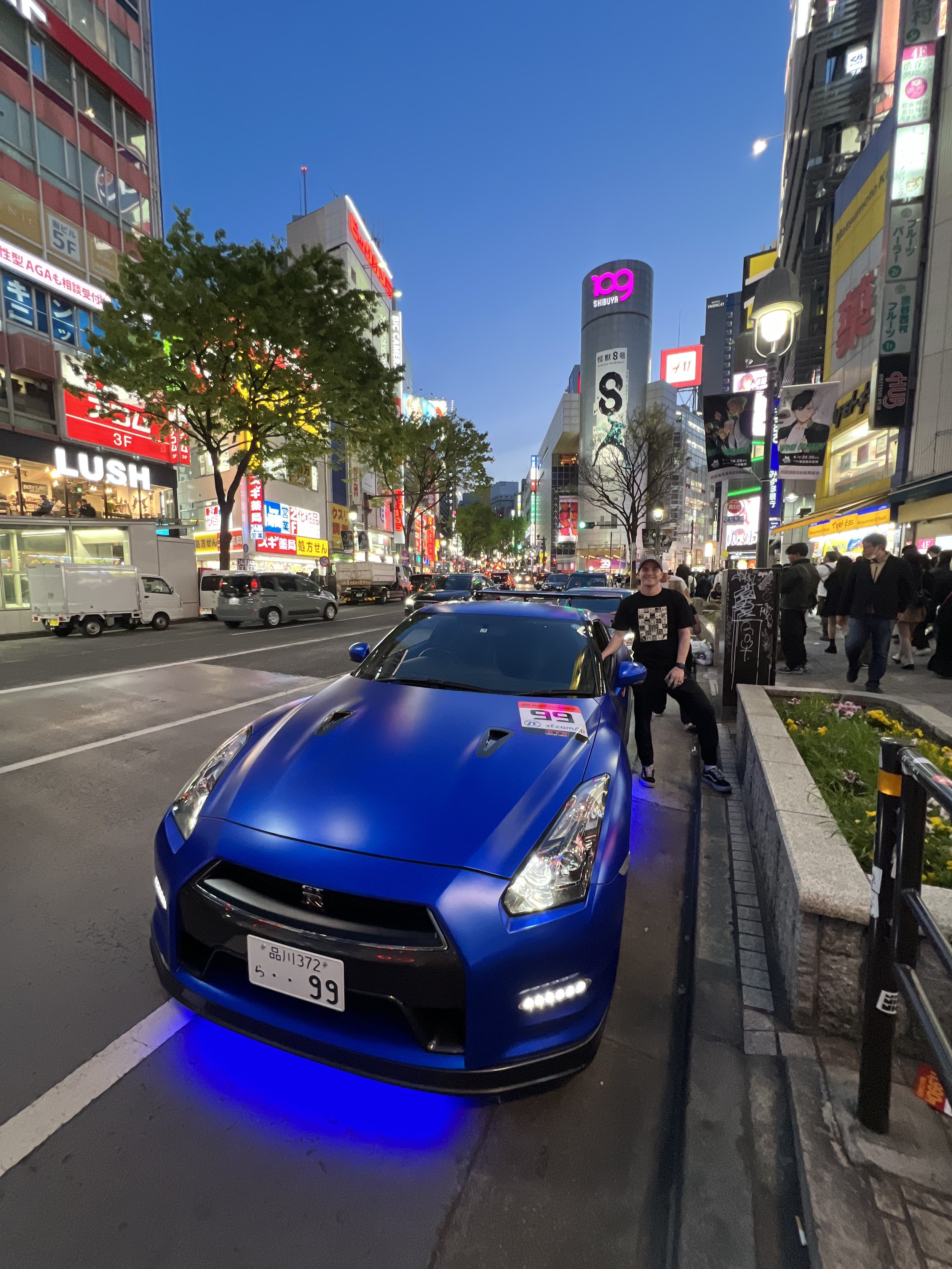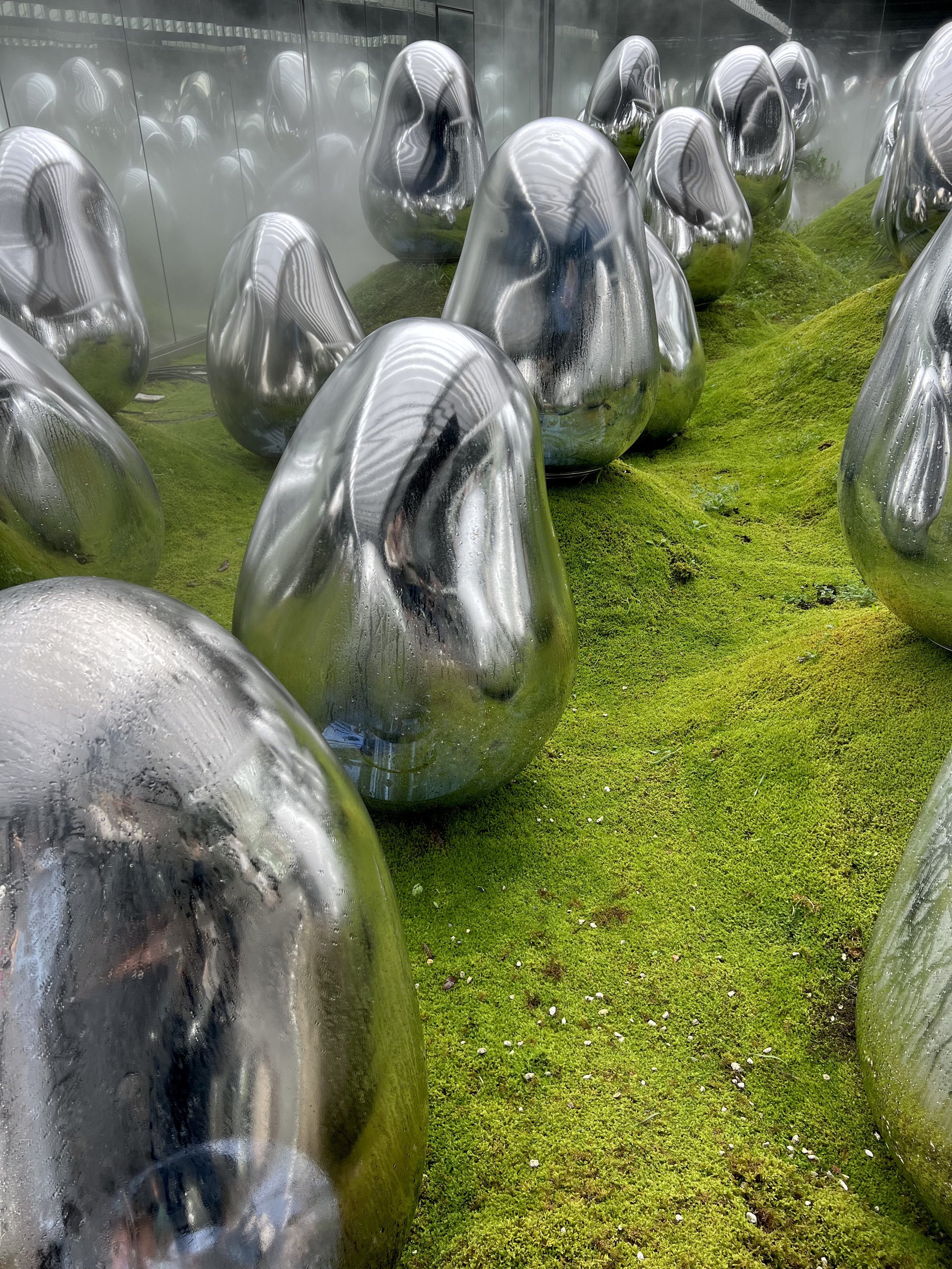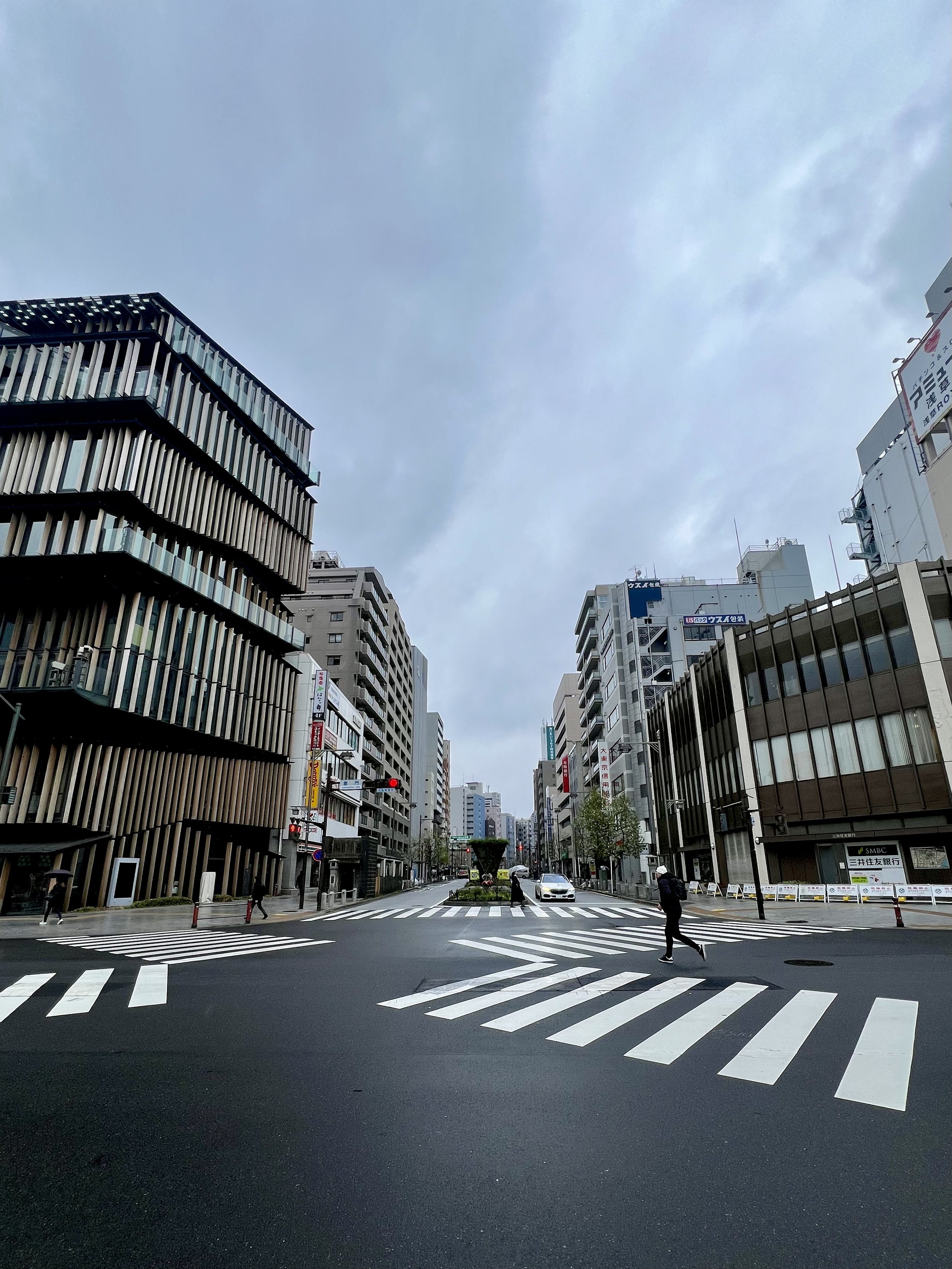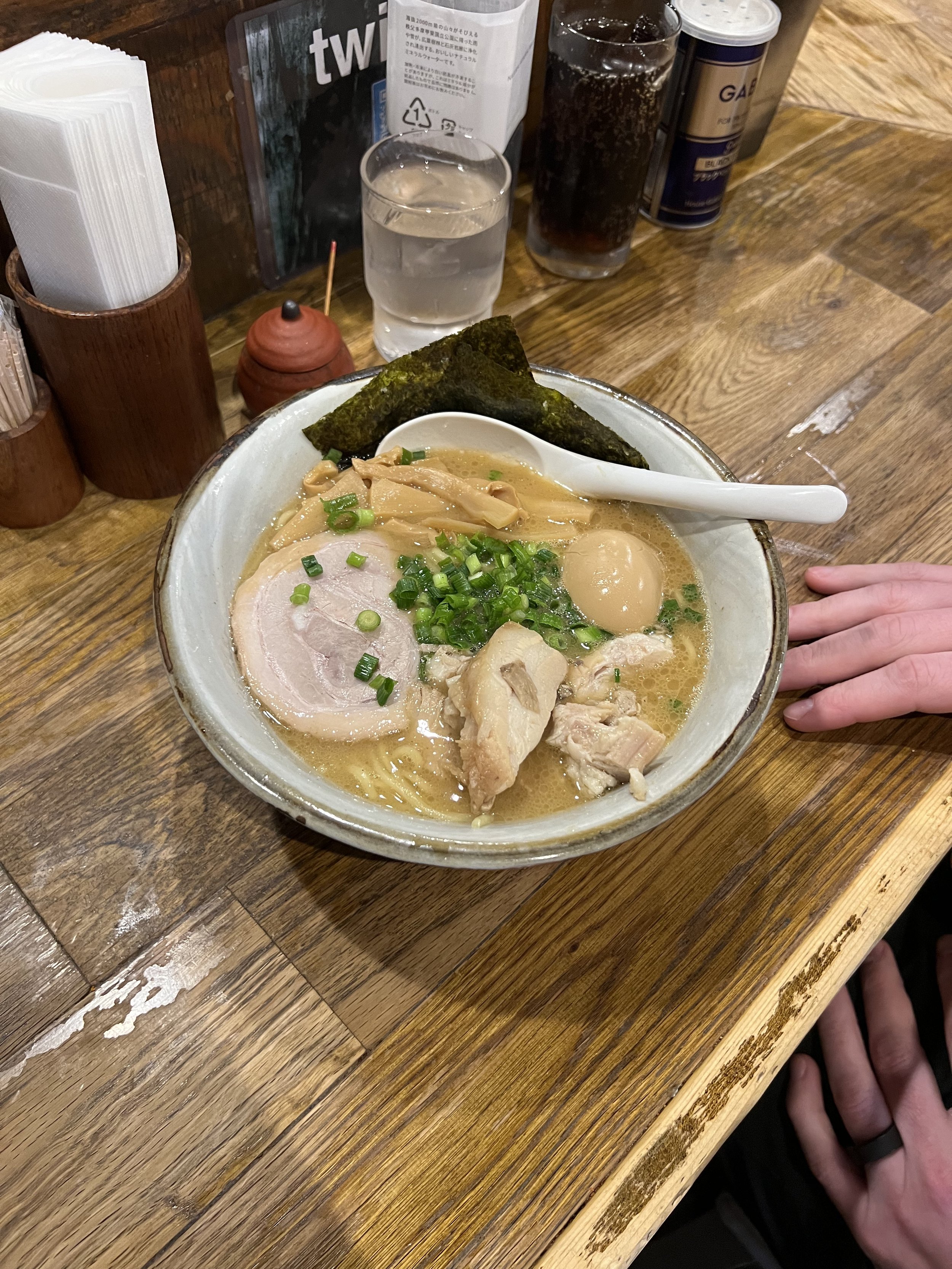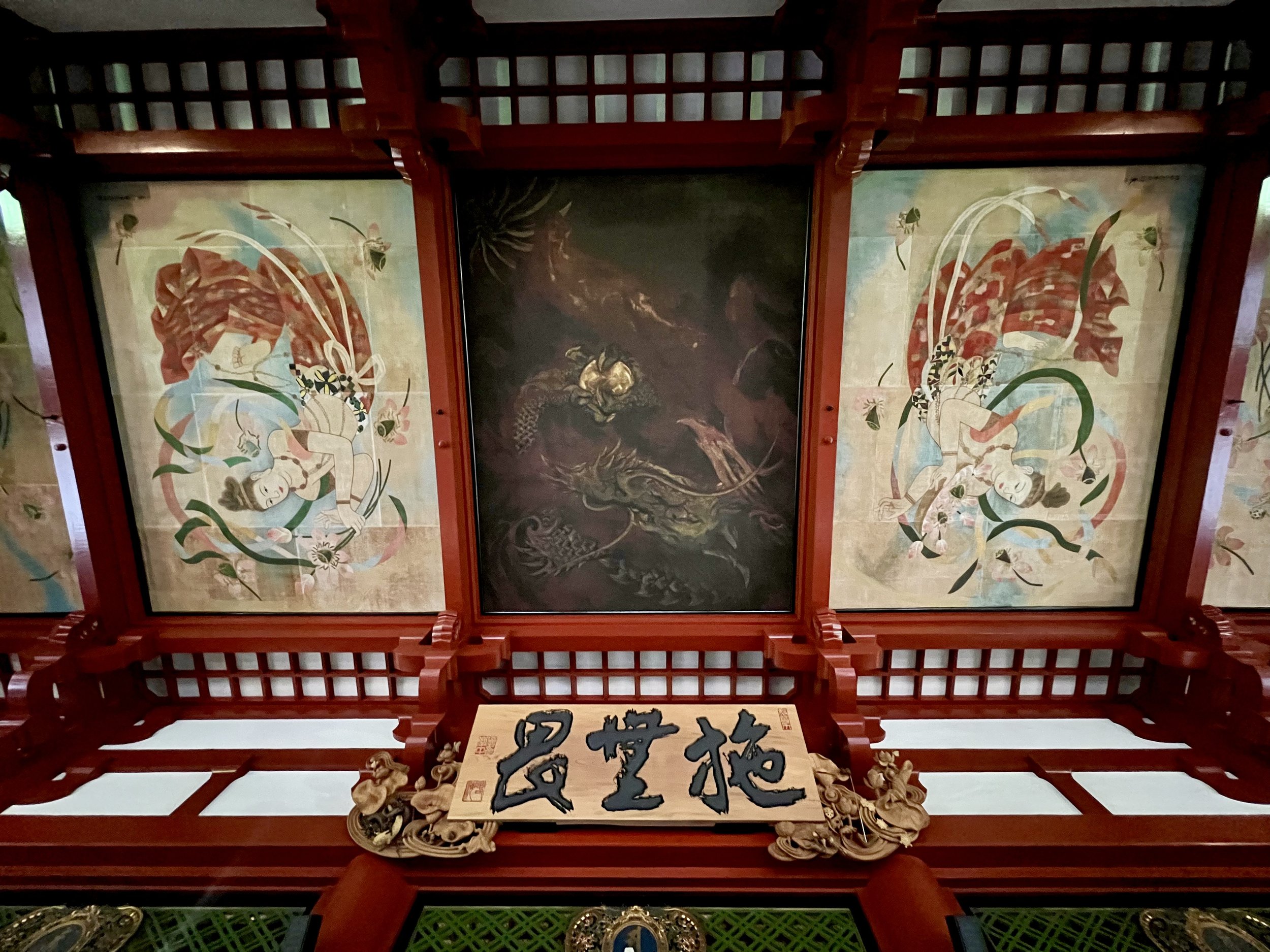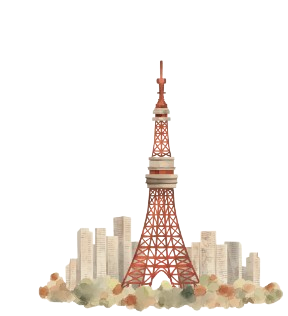
TOKYO
japan
FREE ITINERARY
Download our 3-day Tokyo Itinerary! This complimentary itinerary has been designed for you to copy, paste, and board your flight—or to use as inspiration while creating your own travel plans.
TOKYO GUIDE
Our Tokyo Guide is thoughtfully curated to provide a trusted list of recommendations all in one place, saving you hours of research. The guide is complete with direct links and access to our Google Maps list for easy, on-the-go access.
OUR TRIP
Tokyo is a vast metropolis, home to nearly 14 million people in the city and over 37 million in the Greater Tokyo Area, making it one of the largest urban centers in the world. The city blends modern and traditional elements, with high-tech districts like Shibuya and Shinjuku alongside historic temples, quiet neighborhoods, and gardens. Known for its cleanliness, Tokyo’s streets are well-maintained, and the city ranks among the safest in the world, allowing visitors to explore freely. The transportation network is highly efficient and easy to navigate, making it simple to travel through Tokyo as well as other prefectures throughout the country.
Where We Stayed
With Tokyo’s 23 wards, deciding where to stay initially felt overwhelming. Since we were splitting our time in Tokyo, starting and ending our trip there, I narrowed it down to two locations based on our desired itinerary.
Ginza:
Ginza is Tokyo’s premier shopping and entertainment district, known for its luxury boutiques, flagship stores, and vibrant dining scene. We stayed at the Courtyard Tokyo Ginza Hotel by Marriott, a clean and comfortable hotel. While the rooms were small, they met our needs—after all, we were there to explore! The hotel’s proximity to Tokyo Station made our journey to the next destination quick and easy.
Shinjuku:
Shinjuku is one of Tokyo’s liveliest districts, known for its skyscrapers and vibrant nightlife. We stayed at the Hyatt Regency Tokyo. With a Metro station directly under the hotel, it made exploring Shinjuku and nearby Shibuya seamless. I loved our stay at the hotel; the room was spacious, clean, and had great views of Tokyo. One evening before dinner, we visited the hotel’s cocktail bar, Eau de Vie, and had an excellent experience. While the hotel has several dining options, we chose to eat out. If you find yourself in need of an “emergency” spa visit, I highly recommend it. I impulsively booked a foot massage, as my feet were feeling sore (possibly, broken?) by that point in the trip. The service was fantastic, and I was even served ice cream and tea before leaving.
Shopping
Gucci Flagship Ginza:
If you have your eyes on a designer item, purchase it in Japan! I recommend making an appointment at the location in advance. The experience was great, I had my eyes on the Gucci Jackie bag and they texted me ahead of time and made sure they had what I was looking to purchase in store. I saved $900 by purchasing in Japan rather than Chicago. There are two reasons for this: one, the currency exchange; two, as a foreign citizen I didn’t pay local taxes.
Seiko Dream Square Ginza:
Seiko is a renowned Japanese watchmaking company with a history spanning over a century. If you’re looking for a reliable, high-quality watch at an affordable price, Seiko is a great place to start. My husband and I both found watches we loved. Mine is especially meaningful—it's a limited edition available only in the Japanese market, making it a memorable choice for my first watch! The experience at the store was seamless; the staff was knowledgeable and helpful, ensuring our watches fit perfectly and were set to the correct time before we left.
Activities
Sensoji Temple:
Our first stop in Japan! The Sensoji Temple is Tokyo's oldest and most significant Buddhist temple, founded in 645 AD. We went early in the morning which ended up being perfect as there were no crowds.
teamLab Planets:
An immersive digital art museum where visitors walk barefoot through interactive, dreamlike spaces filled with water, lights, and mirrors. The exhibits blend art and technology, creating a sensory experience that connects people with their surroundings. Purchase tickets in advance and choose your timeslot. They can be purchased online. We spent around 90-minutes there and went through each exhibit twice. I recommend going through once and taking it all in and waiting to take pictures the second time around!
Daikoku Car Tour:
You’ll start to notice a theme throughout our travels: there is BIG car energy in this family! Japanese car culture is actually what initially drew us to Japan, so, of course, our trip wouldn’t be complete without experiencing the famous Daikoku car meet.
The Daikoku Parking Area is a renowned gathering spot for Japan’s car enthusiasts. Known for its striking highway overpasses and neon-lit atmosphere, it attracts impressive displays of modified cars, sports cars, and classic Japanese vehicles, especially on weekends. It is not accessible by public transportation.
After thorough research, we chose Ichioku Tours for this experience, and we highly recommend them! Ichioku rents a fleet of modified Japanese cars that you can drive to the Daikoku meet. We rented a modified Nissan GTR (think Fast and Furious Tokyo Drift!) around Tokyo and to Daikoku as part of a group with three other cars, including our tour guide. The tour started with a stop at Shibuya Crossing, followed by a trip across the Rainbow Bridge to Daikoku, and ended at Tokyo Tower. My husband was absolutely GIDDY. From the driving experience, to all the unique cars at Daikoku, he had the night of his life. And honestly, I had a blast too! It was such a cool way to see Tokyo at night.
Helpful Tip:
You’ll need an international driver’s license to drive in Japan. We obtained ours through AAA before the trip, and the process was easy and inexpensive.
Food & Drink
Tsukiji Outer Market - A must-visit spot in Tokyo, featuring a variety of seafood, snacks, and unique Japanese goods. We loved this place so much that we changed our plans on our return to Tokyo to go a second time. Our favorite finds were wagyu skewers, fatty bluefin tuna nigiri, and strawberry desserts. We also picked up chopsticks, Uji matcha, and Japanese knives to bring home. I could spend days here—I love it, and I miss it!
Bar Albatross in Omoide Yokocho - This quirky little bar is such a fun spot! It may look full from the outside, but just open the door and ask if there’s room for you.
Fuunji - A ramen spot that doesn’t take reservations, with a line-only policy. We arrived shortly after opening and waited about 45 minutes, but it was well worth it! Orders are placed through a vending machine before seating, and they accept cash only.
Flip Flip Coffee Supply - A great coffee shop with delicious pastries. The shop always features a unique car or racecar parked INSIDE! A must-visit if you’re into the Japanese car scene!
7-Eleven - Yes, you read that right! I couldn’t believe it either, but it’s great for breakfast on the go.
Helpful Tips:
Tipping is not practiced in Japan and can actually be considered impolite.
You should ask for the bill; it’s considered rude for waitstaff to bring it unrequested. To get the attention of the waitstaff, say “Sumimasen!”
Transportation
Suica Card – Add the Suica card directly to your Apple Wallet (this is different from downloading the app). You can reload money through your Apple Wallet and use it for public transportation (except bullet trains). It’s also accepted at many stores and vending machines.
The Subway – It was so clean, you could practically lick the floor! At one point, we even saw people polishing the escalator—I’m not sure we’d ever see that in the States. Navigating the Tokyo subway was easy, especially with Google Maps, which provides clear directions on exactly where to go.
JR Pass – The JR Rail Pass is a special travel pass that offers unlimited rides on Japan’s JR trains (bullet and certain local/express trains in Japan). Research if the JR Pass is worthwhile for your trip. For our itinerary, the JR Pass did not meet our needs and would have ended up costing more.
Purchasing Bullet Train Tickets – Download the SmartEx app to buy bullet train tickets up to a year in advance. One month before your trip, you can reserve seats, which I recommend to secure an oversized baggage area if you’re traveling with luggage, or if you want a chance to see Mt. Fuji from your seat.
Helpful Tip:
I couldn’t purchase our tickets with our VISA, which was a bit frustrating since that card has no foreign transaction fees. After some research, I found this is a common issue due to their cyber-security protocols. I ended up using our AMEX, though I read that Mastercard works as well.
Navigating Bullet Trains – We found navigating bullet trains very straightforward. Know your train number and time, and use Google Maps to easily locate the platform. You can also check at the station, but I preferred to have it sorted ahead of time for a seamless experience.
Taxis - We requested a lot of taxis through Uber but when you need to hail one it’s easy and the same way you would in the States. If you hail a taxi, copy and paste the address in English and Japanese from google maps into a note to show your driver. Note that taxi doors are operated automatically by the driver, seatbelts are expected, and all taxis we used accepted credit cards.
Currency
Japan feels ahead of the times in so many ways—except when it comes to payment methods. It’s still overwhelmingly a cash-based country! We went through about $500 USD during our 12-day trip.
Helpful Tip:
International debit cards don’t always work at Japanese bank ATMs. Use the ATMs at 7-Eleven for cash withdrawals, as they’re reliable for foreign cards. Plus, there’s a 7-Eleven on almost every corner!
Language
Japan is easily the most diverse country I've ever visited in terms of tourism. Although there’s a language barrier, the Japanese are very accommodating, and Google Translate is widely used, which helps make communication easier and less intimidating. In Osaka, we had a full conversation with a chef using Google Translate. It was incredible to connect with so many people, even though we spoke different languages. That said, knowing a few key phrases to fall back on will boost your confidence.
Helpful Phrases:
Konnichiwa - hello
Pronunciation: kohn-nee-chee-wah
In Japan, people greet each other with a bow, which can range from a simple nod of the head to a deep bend at the waist. A deeper, longer bow conveys respect, while a short nod is casual and informal.
Arigatou Gozaimasu - thank you
Pronunciation: ah-ree-gah-toh goh-zah-ee-mahs
Sumimasen - excuse me / I'm sorry
Pronunciation: soo-mee-mah-sen
This versatile phrase, "Sumimasen," can mean "Excuse me," "I'm sorry," or even serve as a way to express gratitude or start a conversation. Get comfortable using it, as it's likely to be the phrase you need most! Whether you're catching someone’s attention or apologizing for a minor inconvenience, "Sumimasen" is your go-to. In a restaurant, it’s actually acceptable—and preferred—to call out “Sumimasen” to get the attention of waitstaff.
Hai - yes
Pronunciation: hi
Īe- no
Pronunciation: ee-eh
Sayōnara - goodbye
Pronunciation: sah-yoh-nah-rah
Okaikei onegaishimasu - check, please
Pronunciation: oh-kai-kay oh-neh-guy shee-mahs
Final Thoughts
Tokyo offers an incredible range of experiences, from neon-lit cityscapes and fresh sushi at Tsukiji Market to ancient temples steeped in history. The city’s efficiency, cleanliness, and safe environment make it easy to explore and connect with its welcoming people. Tokyo is a place that leaves you with memories as diverse and vibrant as the city itself. The few days we spent here were not enough; Japan is a country I’ll return to time and time again.
